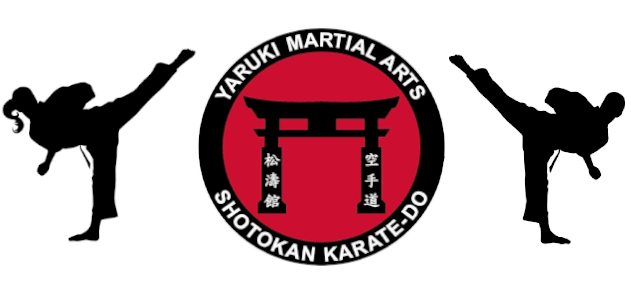Dojo Etiquette
The word Dojo means “Place of the Way”. The Dojo is a place of learning. It is a place to respect, to keep clean and to care for. The Dojo is a place to be made special for practicing a special martial art. In the Yaruki Dojo the observation of basic forms of etiquette is integral to the creation of a respectful and attentive atmosphere.
Bowing:
Bowing is an appropriate way of showing gratitude and humility, while at the same time placing one’s mind in a state of peace which is necessary for the right training.
When entering the Dojo:
– Bow,
– Bow to the teacher,
– Bow to the blackbelts in general.
If you are late:
– Bow as you enter,
– Assume Za-zen (kneeling position),
– Bow toward the class and the teacher in general,
– Wait until the teacher motions you to join in,
– Then get up and join the class.
If you have to leave early:
– Obtain the sensei’s permission before the class commence,
– As the time arrives you bow to the Sensei, wait for his acknowledgement, then
– Reverse the procedure for Late Arrivals.
General:
– When warming-up before the class, bow with “OOS” when the instructor or sensei blackbelt first enters the dojo floor,
– Bow when requesting personal instruction from an instructor,
– When receiving personal instructions, remain quiet until the instructor has completed his explanation. Then biw and say “OOS”,
– After the instructor demonstrates a technique, bow and say “OOS”,
– Bow to your partner at the commencement and end of a training exercise.
Your Attitude:
– Always enter the dojo with an empty mind. If you presume to know already, then it will difficult for you to learn.
– Never come to train when you have ingested any type of drug or alcohol.
– Any negative feelings you might be harbouring must be left outside the dojo. There is no place for them inside.
– Always arrive at the dojo with plenty of time to sign in, change into your gi, and enter the dojo floor at least 5 minutes before class is to begin.
Dress and Cleanliness:
– The dojo should be kept spotless. If you see something that indicates otherwise, for example, rubbish or dirt on the floor, don’t wait for someone else to correct it. This is part of your training.
– Your gi should always be clean and mended.
– Your body and, in particular, your feet must be very clean before you step on to the dojo floor. Keep fingernails and toenails trimmed.
– No rings, watches, or jewellery of any kind should be worn during training.
During class:
– Begin and end your exercises with a bow.
– Do not leave the dojo floor without first obtaining the permission of the instructor,
– Never interrupt the class to question unnecessarily. If you must ask a question, wait until an appropriate moment.
– Do not call out or interrupt the instructor while he/she is teaching.
– There should never be conversation of any kind while the instructor is demonstrating. When training with your partner, speak only when necessary.
– For reasons of safety, respect and courtesy, it is essential that the instructions of the Sensei be followed exactly. Many karate techniques can be dangerous if not practiced properly. Emphasis should be placed on learning as much as possible through intense observation and concentrated practice and questions should be saved for when they are necessary.
– Never argue about a technique. If there is a problem that cannot be resolved, ask the instructor for help.
– It is inappropriate for a student (including black belts) to offer instruction when he or she is not formally teaching the class or has not been specifically requested to assist by the instructor.
The Sensei:
– Always call your teacher “SENSEI”, even privately.
– Every instructor is treated with respect at all times.
– Never compare one instructor with another. Every Sensei has something unique to share with you. Your job is to discover it.
